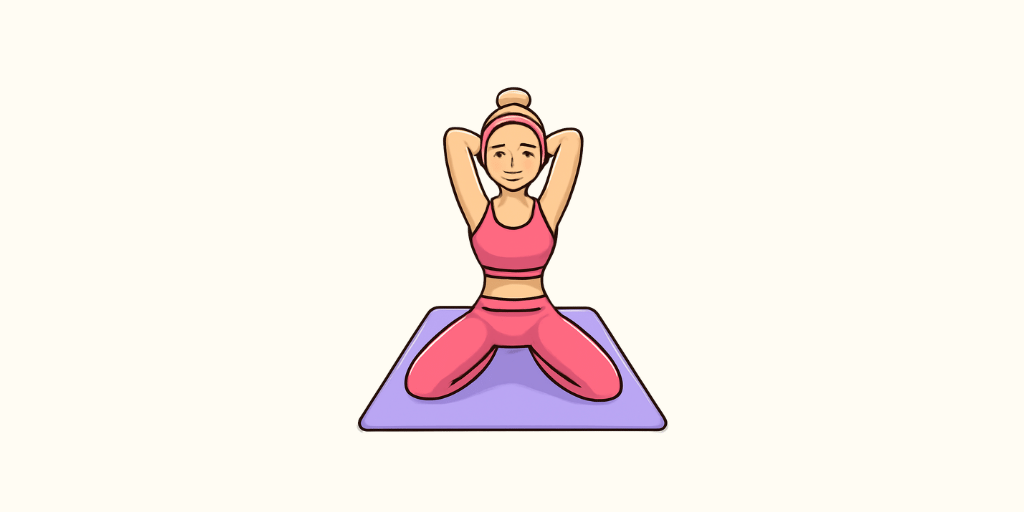Sanskrit Name: उत्तानमंडुकासन
English Name: Extended Frog Pose
Description:
Uttanamandukasana, known as “Extended Frog Pose,” embodies themes of openness, relaxation, and stability. This posture mimics a frog with its legs spread and arms extended, facilitating a profound stretch throughout the body. The term Uttana (उत्तान) means Stretched or Extended, Manduka (मण्डूक) refers to Frog, and Asana (आसन) translates to Pose or Posture. This pose is deeply rooted in the ancient traditions of Hatha Yoga and is often linked to meditative and healing practices. Frog poses, including Mandukasana, are referenced in yogic texts like the Hatha Yoga Pradipika, highlighting their advantages for enhancing flexibility and achieving inner balance.
Benefits:
- Improves Flexibility: This asana stretches the hips, thighs, and groin, enhancing flexibility in these areas, which is beneficial for overall mobility.
- Strengthens Core Muscles: Engaging the core during the pose helps in building strength, which is vital for maintaining good posture and stability.
- Stimulates Digestive Organs: The compression and release of the abdominal area during the pose can aid in improving digestion and alleviating digestive issues.
- Reduces Stress and Anxiety: The deep breathing involved in this asana promotes relaxation, helping to reduce stress and anxiety levels.
- Enhances Circulation: The pose encourages better blood flow to the pelvic region and lower body, which can improve overall circulation.
- Supports Mental Clarity: The focus required to maintain balance and form can enhance mental clarity and concentration.
- Therapeutic for Sciatica: Uttanamandukasana can help relieve sciatic pain by stretching the lower back and hips, providing relief for those suffering from sciatica.
Medical Conditions(Relief):
Incorporating this asana into a regular yoga practice can lead to these therapeutic benefits, promoting both physical and mental well-being.
Uttanamandukasana, also known as the Extended Frog Pose, is beneficial for various medical conditions. It can aid in alleviating lower back pain by promoting flexibility and strength in the spine. This asana also helps improve digestion, making it useful for those dealing with gastrointestinal issues. Additionally, it can enhance hip mobility, which is advantageous for individuals with joint stiffness. The pose encourages relaxation and stress relief, contributing positively to mental well-being. Overall, practicing Uttanamandukasana can support physical and emotional health in several ways.
Medical Conditions(Avoid):
- Knee Injuries: Individuals with any knee injuries or chronic knee pain should refrain from this asana, as it places stress on the knee joints.
- Hip Issues: Those suffering from hip injuries or conditions such as bursitis may find this pose uncomfortable or aggravating.
- Back Problems: People with severe lower back pain or spinal issues should avoid this pose, as it requires bending and stretching that could worsen their condition.
- Pregnancy: Expectant mothers should avoid this asana, particularly in later stages, due to the strain it can place on the abdomen and pelvis.
- Recent Surgery: Anyone who has undergone recent surgery, especially in the lower body, should avoid this pose until fully healed and cleared by a medical professional.
- Severe Fatigue or Illness: Those experiencing extreme fatigue or illness should not practice this asana, as it can require significant energy and stability.

